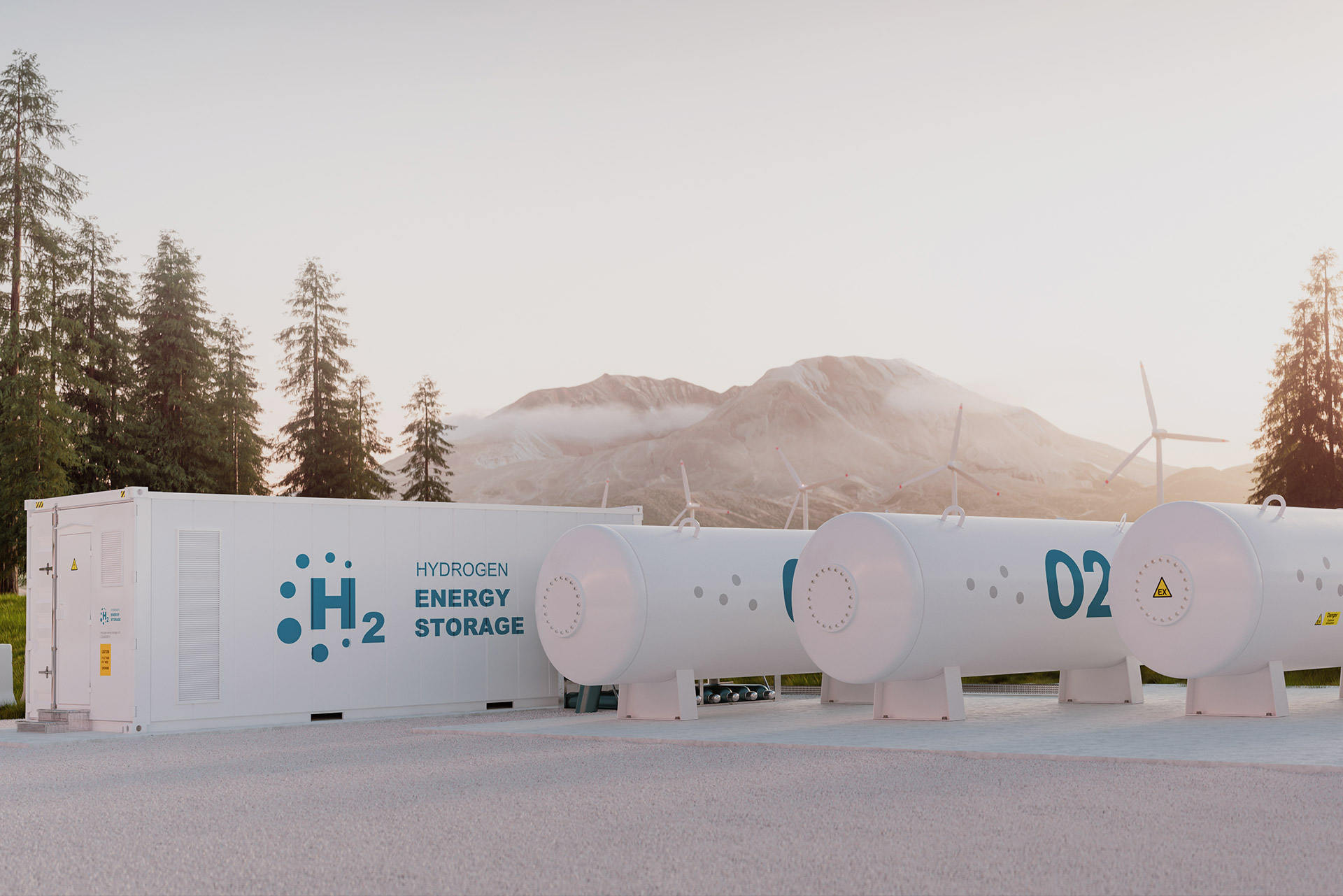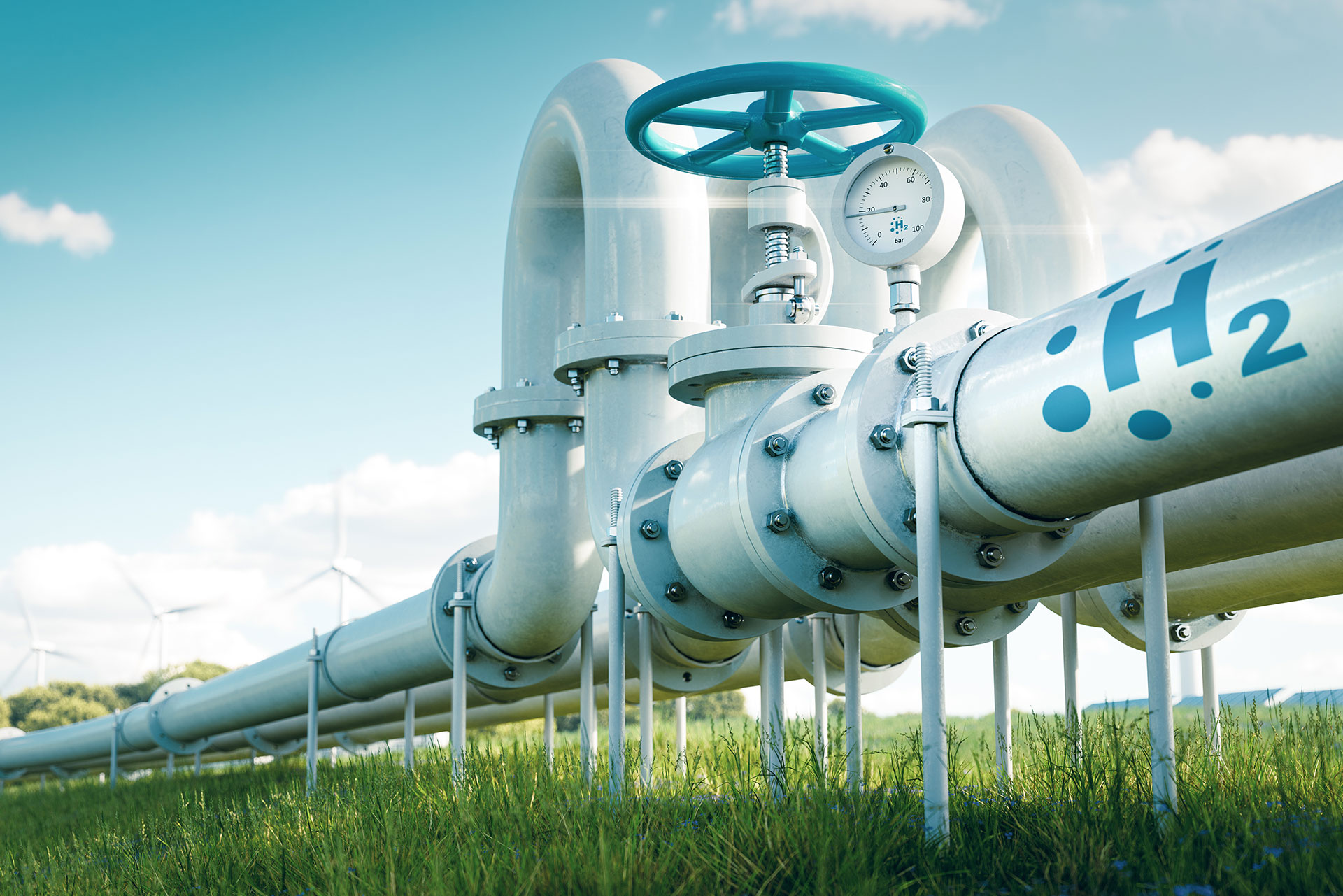Hydrogen is considered a very promising fuel because it burns only water, emitting zero CO₂ when burned.
One of the most important objectives at European level for the next period is to obtain hydrogen with the smallest possible carbon footprint, at a competitive price, making it easy to adopt. As the hydrogen market develops, its price is expected to fall.
Hydrogen has a variety of applications, which has led to the concept of a possible future 'hydrogen economy'.
Decarbonising and maintaining competitiveness in industry
Transport
(even over long distances)
Fuel
for heating
Storing surplus renewable energy
COLOUR PALETTE OF HYDROGEN
We hear of the existence of several types of hydrogen: grey, blue, green, turquoise, etc. Of course, from a chemical point of view, we cannot speak of a colour for hydrogen, as this gas is in fact colourless.
The hydrogen "rainbow" comes from the need to indicate how hydrogen is produced, with clues also on the carbon footprint of its production.
Grey hydrogen:
from natural gas, involves relatively high carbon emissions.
Blue hydrogen:
produced from natural gas but which captures or uses carbon emissions.
Green hydrogen:
made from water, electricity from renewable sources is used in the production process. Carbon emissions are zero.
Turquoise hydrogen:
produced from natural gas, more specifically by pyrolysis of methane, involves obtaining solid carbon as a by-product. It is not emission neutral.
Yellow hydrogen:
the result of electrolysis from water using solar energy. It is considered "green", i.e. sustainable, with no carbon emissions.
Hydrogen pink:
also produced by electrolysis using nuclear energy.
Black/brown hydrogen:
is produced from coal (but sometimes this name is also given to hydrogen from fossil fuels).
HYDROGEN STRATEGY
Romanian legislation, on the right track.
In November 2023, the Ministry of Energy launched for debate the draft on "National Hydrogen Strategy", which sets out four general objectives and 23 specific objectives, as well as an action plan for 2030.
The 4 general objectives are:
DECARBONISATION OF HYDROGEN PRODUCTION FROM NATURAL GAS
For countries with natural gas resources, including Romania, it is important to find solutions so that hydrogen production from natural gas has the smallest possible carbon footprint.
Hydrogen can be obtained from natural gas:
By reforming methane
The methane reforming process results in carbon dioxide emissions. But carbon dioxide emissions can be reduced by using CCS (carbon capture, transport and storage) technology. This proves that the energy transition and environmental protection from intense emissions require not 'silver bullets', but a carefully designed mix of technologies and a synergy between the different ways of decarbonising and producing energy.
By pyrolysis
In the case of methane pyrolysis, the carbon obtained is in solid form, can be used in industrial processes and does not require CCS technology, but specialists believes that there is room for improvement in the efficiency of this technology.
In conclusion, CCS development and technological innovation are two ways in which Romania can use its rich natural gas resources with the least possible impact on the environment.
FIRST STEPS TOWARDS HYDROGEN TECHNOLOGY
Pilot projects
Romania has several innovative hydrogen projects.
We mention only 2 of them:
Mixture of natural gas and hydrogen
This pilot project was completed in March 2024 and proved that hydrogen can be used in existing networks in combination with natural gas for domestic use.
Hydrogen production from renewables
For example, the Petrobrazi plant could be the unit that will produce green hydrogen from renewable energy, following a total investment of €140 million, of which €50 million has been obtained through the PNRR. Final investment decision will be taken in 2024.





